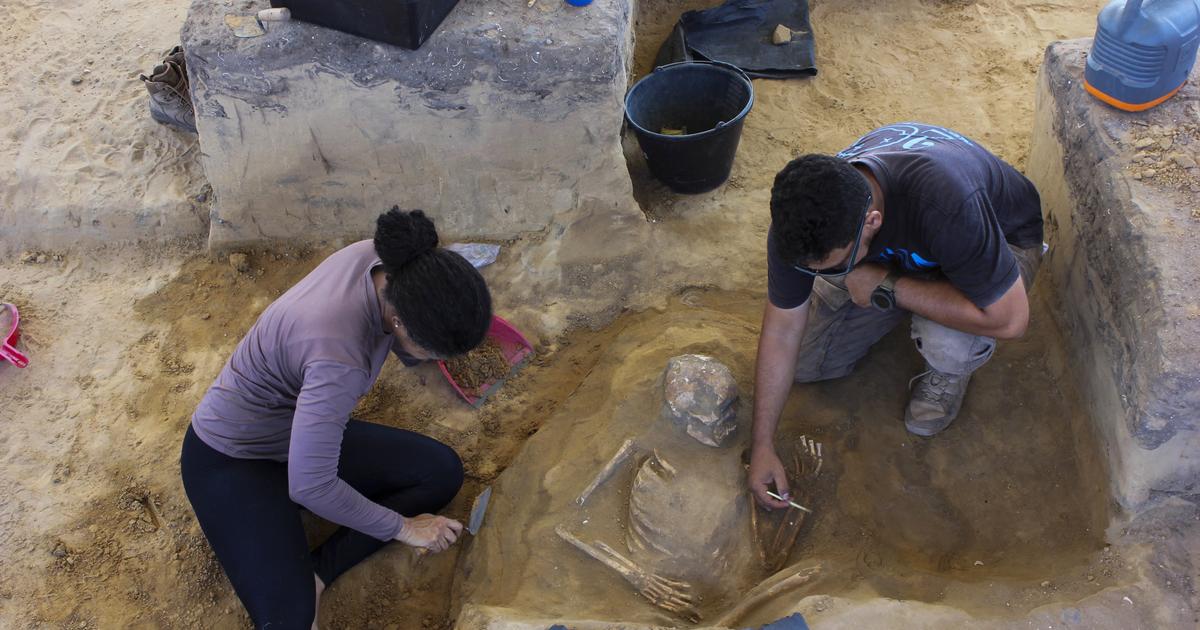
Discovery of 9,000-year-old treasure 'may change Brazilian history'
” data-script=”https://static.lefigaro.fr/widget-video/short-ttl/video/index.js” >
Since the discovery of human bones on the grounds of the coastal city of São Luís in Brazil, archaeologists have combed more than six hectares for four years. Nearly 100,000 artifacts have been found, but most of the treasures are still underground, according to specialists.
Workers had just attacked the construction of an apartment complex in northeastern Brazil when they found human bones, along with pottery shards. They were not at the end of their surprises.
Excavations at the site, in the coastal city of São Luis, soon revealed thousands of ancient objects that could date back to 9,000 years ago. A treasure, according to archaeologist Wellington Lugg who is directing the excavations, “It could change the entire history of the region, or even the entire history of Brazil.”. The archaeologist admits he had no idea what he was waiting for when Brazilian construction giant MRV invited his company, W Lage Arqueologia, in 2019 to survey the site, a standard procedure before building housing.
Covered in tropical vegetation and bordered by the ever-expanding urban fabric of São Luís, the capital of Maranhão state, the land extends over six hectares. During his research, Mr. Lage learned that interesting discoveries had been made there as early as the 1970s, including a piece of a human jaw in 1991. His team soon found more: quantities of stone tools, ceramics and bone fragments. During four years of excavations, 43 human skeletons and more than 100,000 ancient objects were discovered, according to the Brazilian Institute of History and Artistic Heritage (IFAN), which announced the discovery. “great” Several days ago.
“We've been working for four years now, and we've barely scratched the surface.”
Wellington lag
The researchers will now inventory the pieces and analyze them in detail before displaying them and publishing their findings. “We have been working for four years, and we have barely scratched the surface.”insists Mr. Lage, 70, a São Paulo native whose wife and two children are also archaeologists. The first discoveries have already attracted the attention of the scientific community.
Bulletin / Agence France-Presse
Mr Lage explains that his team – which now has 27 members, including archaeologists, chemists, a historian and a documentarian – has cataloged four different eras at the site. The top layer is left by the Tupinamba people, who lived in the area when European settlers founded the city of São Luis in 1612. Next comes a layer of ancient objects typical of the peoples of the Amazon rainforest, followed by the “sambaki”: a pile of pottery, shards and bones used by some communities of inhabitants indigenous people to build their homes or bury their dead. Still below, at a depth of about two metres, is another layer left by a group that made primitive ceramics and lived there between 8 and 9,000 years ago, according to estimates.
Read alsoTwo thieves of archaeological sites in Corsica have been charged
It is much older than the oldest “sampaki” found so far in the area, which dates back to about 6,600 years ago, Mr. Lage points out. Scientists have long debated the question of when and how the first humans arrived in the Americas from Asia. The finds of this specialist indicate that they settled in this region of present-day Brazil at least 1,400 years earlier than it seemed to have been founded.
Archaeologists plan to conduct further analyzes to more accurately determine the date of the pieces. The site actually represents it “A milestone in Brazilian prehistory”Evan detailed in a press release. For this organization, “It is a testament to the long history of human settlement.” On the side, “Uncovering the previous past” Sometimes it has already been documented.
Archaeologist Arkle Bandeira, from the Federal University of Maranhão, who is building a laboratory and museum to house this treasure with funding from the MRV Group, points out that the site could provide valuable information about the culture and history of ancient peoples submerged for a long time. . According to him, these discoveries “It plays a crucial role in telling the story of our long history.”.
” data-script=”https://static.lefigaro.fr/widget-video/short-ttl/video/index.js” >

“Unapologetic pop culture trailblazer. Freelance troublemaker. Food guru. Alcohol fanatic. Gamer. Explorer. Thinker.”
